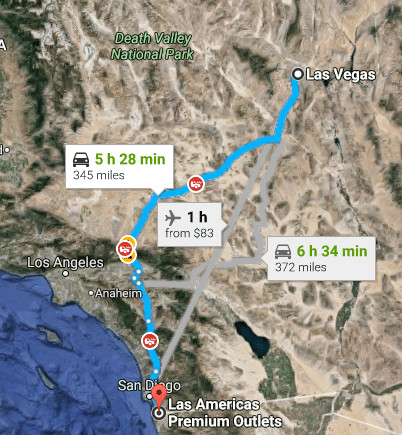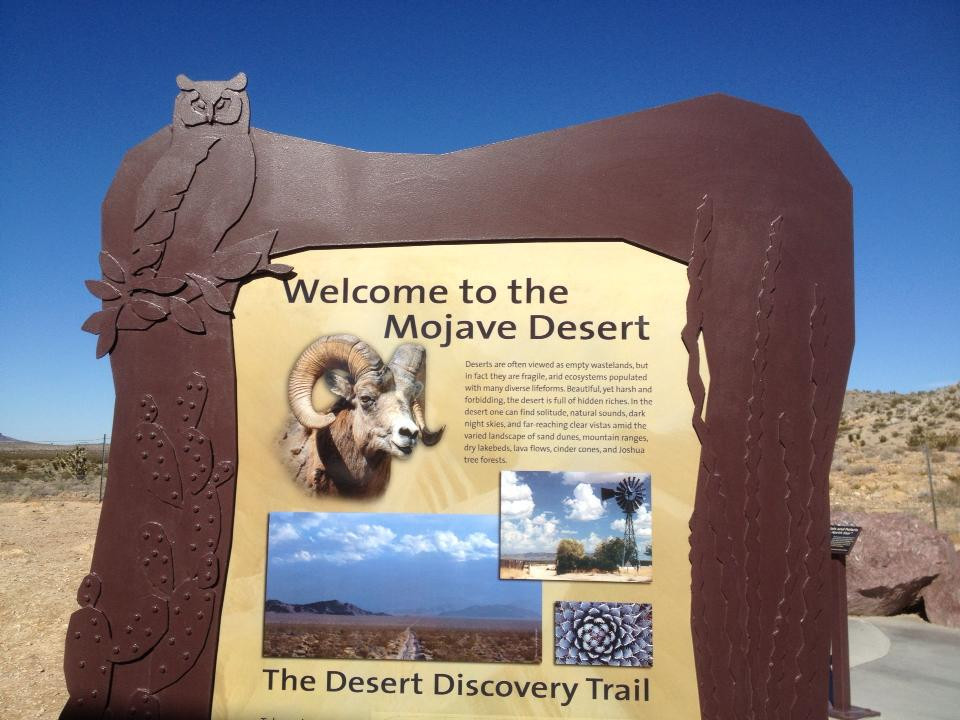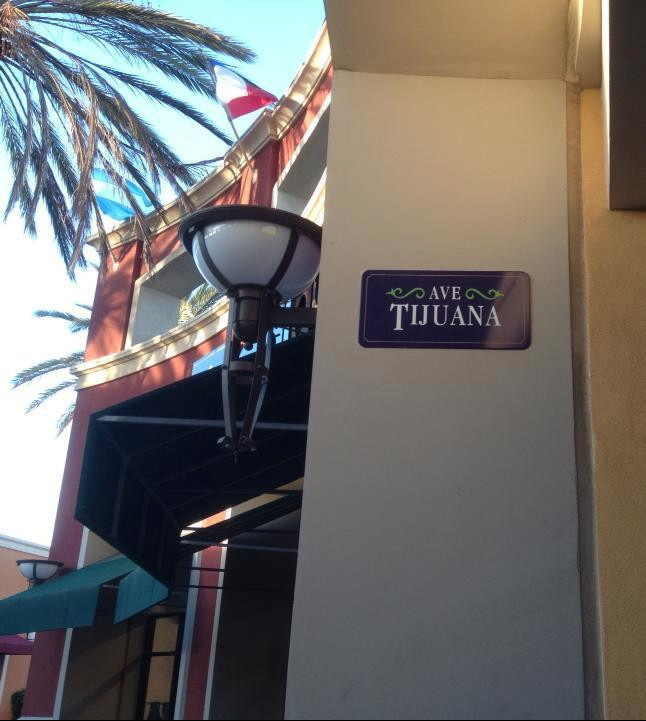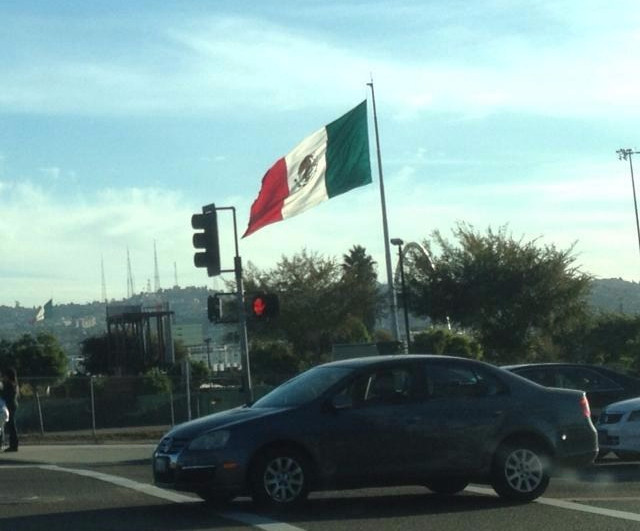Planning a trip from Las Vegas to Mexico? This guide, crafted with the LGBTQ+ traveler in mind and brought to you by gaymexico.net, answers your questions about distance, travel options, and exciting destinations. Discover the beauty and culture that awaits!
1. What Is The Distance From Las Vegas To Mexico?
The distance from Las Vegas to Mexico varies depending on which part of Mexico you’re heading to. The closest border crossing is in Tijuana, approximately 330 miles (531 kilometers) from Las Vegas. This drive typically takes around 5 to 6 hours. If you’re considering other destinations like Puerto Vallarta or Mexico City, the distance and travel time will be significantly greater, often requiring flights. Consider consulting gaymexico.net for more LGBTQ+-friendly travel advice and information.
1.1 Driving Distance: Las Vegas to Tijuana
Driving to Tijuana is the most direct route to Mexico from Las Vegas. Here’s a breakdown:
- Distance: Approximately 330 miles (531 kilometers)
- Driving Time: 5-6 hours (depending on traffic and border wait times)
- Route: Primarily via I-15 South
 Map showing the route from Las Vegas to the Mexican border near Tijuana, highlighting major roads and landmarks along the way.
Map showing the route from Las Vegas to the Mexican border near Tijuana, highlighting major roads and landmarks along the way.
Important Considerations for Driving:
- Border Crossing: Ensure you have the necessary documents (passport, visa if required). Check border wait times in advance.
- Car Insurance: Your US car insurance may not be valid in Mexico. Obtain Mexican car insurance before crossing the border.
- Safety: Be aware of your surroundings, especially in border towns. Stick to well-traveled routes and avoid driving at night.
1.2 Flight Distance: Las Vegas to Popular Mexican Destinations
Flying is the quickest way to reach popular destinations deeper within Mexico. Here’s a look at flight distances and times:
| Destination | Approximate Flight Distance | Estimated Flight Time |
|---|---|---|
| Puerto Vallarta | 1,300 miles (2,092 km) | 2.5 – 3 hours |
| Mexico City | 1,550 miles (2,494 km) | 3 – 3.5 hours |
| Cancun | 1,900 miles (3,058 km) | 4 – 4.5 hours |
| Guadalajara | 1,200 miles (1,931 km) | 2.5 – 3 hours |
| San Miguel de Allende | 1,450 miles (2,334 km) | 3 – 3.5 hours (to Leon Airport, then a drive) |
Note: Flight times are estimates and can vary depending on the airline, route, and weather conditions.
2. What Are The Best Ways To Travel From Las Vegas To Mexico?
Several transportation options are available for traveling from Las Vegas to Mexico, each with its advantages and disadvantages. The best choice depends on your budget, time constraints, and desired destination.
2.1 Driving: Pros and Cons
Pros:
- Flexibility: You can set your own pace and explore along the way.
- Cost-Effective (Potentially): If traveling with a group, driving can be cheaper than flying.
- Scenic Route: The drive through the Mojave Desert can be beautiful.
Cons:
- Long Drive: 5-6 hours to the border is just the beginning. Driving to destinations further into Mexico can take days.
- Border Crossing Hassles: Potential delays and paperwork.
- Safety Concerns: Increased risk of car trouble or accidents.
 Desert landscape showcasing the arid environment typical of the Mojave Desert, with clear blue skies and distant mountains.
Desert landscape showcasing the arid environment typical of the Mojave Desert, with clear blue skies and distant mountains.
2.2 Flying: Pros and Cons
Pros:
- Fastest Option: Significantly reduces travel time, especially for destinations further into Mexico.
- Comfort: More comfortable than a long drive.
- Direct Routes: Many airlines offer direct flights from Las Vegas to major Mexican cities.
Cons:
- More Expensive: Generally, flying is more expensive than driving.
- Less Flexibility: You are bound by airline schedules.
- Airport Hassles: Security lines, baggage claim, etc.
2.3 Bus: Pros and Cons
Pros:
- Most Affordable: Usually the cheapest way to travel.
- Convenient: No need to worry about driving or parking.
Cons:
- Longest Travel Time: Significantly longer than driving or flying.
- Less Comfortable: Bus travel can be cramped and uncomfortable.
- Safety Concerns: Buses can be targets for crime in some areas.
2.4 Shuttle/Private Car: Pros and Cons
Pros:
- Convenience: Door-to-door service.
- Comfort: More comfortable than a bus.
Cons:
- Expensive: More expensive than a bus, potentially comparable to flying for shorter distances.
- Limited Availability: May not be available to all destinations.
3. What Documents Do I Need To Travel To Mexico From Las Vegas?
Ensure you have the correct documents for entry into Mexico. Requirements vary depending on your citizenship and how you are traveling.
3.1 Passport Requirements
- Passport Book: Required for air travel and recommended for land travel. A passport book is essential for re-entering the United States.
- Passport Card: Valid for land and sea travel between the US and Mexico. However, it is not valid for air travel.
3.2 Visa Requirements
- US Citizens: Generally, US citizens do not need a visa for tourist travel to Mexico for stays of up to 180 days.
- Other Nationalities: Visa requirements vary depending on your nationality. Check with the Mexican embassy or consulate in your country before traveling.
3.3 Other Important Documents
- Driver’s License (If Driving): A valid US driver’s license is usually sufficient for driving in Mexico, but an international driving permit is recommended.
- Vehicle Registration and Title (If Driving): Proof of ownership of the vehicle.
- Mexican Car Insurance (If Driving): Required by Mexican law.
- FMM (Forma Migratoria Múltiple): A tourist permit required for stays longer than 72 hours or for travel beyond the immediate border region. Obtain this online or at the border.
3.4 COVID-19 Related Requirements
- As of 2023, Mexico does not require proof of vaccination or a negative COVID-19 test for entry. However, this can change, so check the latest guidelines from the CDC and the Mexican government before traveling.
4. What Are Some Popular Destinations In Mexico Near The Las Vegas Border?
If you’re looking for a quick trip to Mexico from Las Vegas, consider these destinations near the border:
4.1 Tijuana
- Distance: Approximately 330 miles (531 kilometers) from Las Vegas.
- Why Visit: A bustling border city with a vibrant nightlife, delicious street food, and cultural attractions like the Tijuana Cultural Center (CECUT).
- LGBTQ+ Scene: While not as developed as other Mexican cities, Tijuana has a growing LGBTQ+ scene, with several gay bars and clubs.
 A bustling street in Tijuana showcasing vibrant colors, local shops, and the lively atmosphere of the city.
A bustling street in Tijuana showcasing vibrant colors, local shops, and the lively atmosphere of the city.
4.2 Rosarito
- Distance: Approximately 350 miles (563 kilometers) from Las Vegas (via Tijuana).
- Why Visit: A popular beach town known for its beautiful beaches, affordable seafood, and lively nightlife.
- LGBTQ+ Scene: Rosarito is generally welcoming to LGBTQ+ travelers, though it doesn’t have a dedicated gay scene.
4.3 Ensenada
- Distance: Approximately 400 miles (644 kilometers) from Las Vegas (via Tijuana).
- Why Visit: A charming port city with a rich history, delicious seafood, and the famous La Bufadora marine geyser.
- LGBTQ+ Scene: Ensenada is a relaxed and welcoming destination for LGBTQ+ travelers.
5. What Are Some LGBTQ+-Friendly Destinations Further Into Mexico?
For a more immersive LGBTQ+ experience, consider these destinations further into Mexico:
5.1 Puerto Vallarta
- Why Visit: Known as the “San Francisco of Mexico,” Puerto Vallarta boasts a thriving LGBTQ+ scene, beautiful beaches, and a relaxed atmosphere.
- LGBTQ+ Highlights: Zona Romantica (the gay district), numerous gay bars and clubs, LGBTQ+ beach resorts, and the annual Vallarta Pride celebration.
- According to a study by the UCLA Williams Institute in July 2025, PVR provides Y for the most gay travelers.
5.2 Mexico City
- Why Visit: A cosmopolitan metropolis with a rich history, world-class museums, and a vibrant LGBTQ+ scene.
- LGBTQ+ Highlights: Zona Rosa (the gay district), numerous gay bars and clubs, LGBTQ+ cultural events, and a progressive attitude towards LGBTQ+ rights.
5.3 Guadalajara
- Why Visit: Mexico’s second-largest city, Guadalajara offers a blend of tradition and modernity, with a growing LGBTQ+ scene.
- LGBTQ+ Highlights: Numerous gay bars and clubs, particularly in the Chapultepec district, and a welcoming atmosphere.
5.4 Cancun
- Why Visit: While primarily known for its beaches and resorts, Cancun also has a growing LGBTQ+ scene and is generally welcoming to LGBTQ+ travelers.
- LGBTQ+ Highlights: Several gay-friendly resorts and bars, and easy access to the Riviera Maya, which also has LGBTQ+-friendly options.
6. What Are Some Safety Tips For LGBTQ+ Travelers In Mexico?
While Mexico is generally becoming more accepting of LGBTQ+ individuals, it’s important to be aware of potential safety concerns:
6.1 General Safety Tips
- Be Aware of Your Surroundings: Avoid walking alone at night in unfamiliar areas.
- Avoid Public Displays of Affection: In more conservative areas, avoid excessive public displays of affection.
- Stick to Tourist Areas: Tourist areas are generally safer and more accepting.
- Don’t Flash Wealth: Avoid wearing expensive jewelry or carrying large amounts of cash.
- Trust Your Gut: If a situation feels uncomfortable, leave.
6.2 Specific LGBTQ+ Safety Tips
- Research Your Destination: Learn about the local LGBTQ+ scene and any potential safety concerns.
- Use Gay-Friendly Resources: Utilize resources like gaymexico.net to find LGBTQ+-friendly businesses and accommodations.
- Be Discreet in Conservative Areas: In more conservative areas, be discreet about your sexual orientation or gender identity.
- Travel with a Friend: Traveling with a friend can provide added safety and support.
- Know Your Rights: Familiarize yourself with Mexican laws regarding LGBTQ+ rights.
6.3 Legal Protections
- Mexico has made significant progress in LGBTQ+ rights, including legalizing same-sex marriage nationwide.
- However, discrimination based on sexual orientation and gender identity can still occur, particularly in more conservative areas.
7. What Is The Current Legal And Social Climate For LGBTQ+ People In Mexico?
Mexico’s legal and social climate for LGBTQ+ people has evolved significantly in recent years:
7.1 Legal Advancements
- Same-Sex Marriage: Legalized nationwide in 2022.
- Adoption Rights: Same-sex couples have the right to adopt in many parts of Mexico.
- Anti-Discrimination Laws: Some states have anti-discrimination laws protecting LGBTQ+ people.
- Gender Identity Laws: Some states allow transgender individuals to change their legal gender.
7.2 Social Attitudes
- Growing Acceptance: Social attitudes towards LGBTQ+ people are becoming more accepting, particularly in major cities and tourist destinations.
- Regional Variations: Attitudes can vary significantly depending on the region, with more conservative views prevalent in rural areas.
- Continued Challenges: LGBTQ+ people still face discrimination and prejudice in some areas.
7.3 Political Landscape
- Support for LGBTQ+ Rights: Many political parties support LGBTQ+ rights.
- Opposition: Opposition to LGBTQ+ rights remains in some sectors of society.
- Advocacy Groups: Numerous LGBTQ+ advocacy groups are working to advance LGBTQ+ rights in Mexico.
8. What Cultural Considerations Should LGBTQ+ Travelers Be Aware Of In Mexico?
Understanding Mexican culture can enhance your travel experience and help you avoid misunderstandings:
8.1 Machismo and Marianismo
- Machismo: Traditional concept of masculinity emphasizing strength, dominance, and virility.
- Marianismo: Traditional concept of femininity emphasizing purity, self-sacrifice, and motherhood.
- Impact on LGBTQ+ People: These traditional concepts can contribute to negative stereotypes and discrimination against LGBTQ+ people.
8.2 Family Values
- Importance of Family: Family is highly valued in Mexican culture.
- Acceptance of LGBTQ+ Family Members: While acceptance varies, many Mexican families are becoming more accepting of their LGBTQ+ members.
8.3 Religion
- Catholicism: Catholicism is the dominant religion in Mexico.
- Influence on Social Attitudes: Religious beliefs can influence social attitudes towards LGBTQ+ people.
- Growing Acceptance: Some religious leaders are becoming more accepting of LGBTQ+ people.
8.4 Communication Styles
- Indirect Communication: Mexicans often use indirect communication to avoid conflict.
- Importance of Politeness: Politeness and respect are highly valued.
- Physical Touch: Physical touch is common in social interactions.
8.5 Language
- Spanish: The official language of Mexico.
- Learning Basic Phrases: Learning basic Spanish phrases can enhance your travel experience and show respect for the local culture.
- LGBTQ+ Terminology: Familiarize yourself with common LGBTQ+ terminology in Spanish.
9. How Can Gaymexico.net Help Me Plan My LGBTQ+ Trip To Mexico From Las Vegas?
Gaymexico.net is your ultimate resource for planning an unforgettable and safe LGBTQ+ trip to Mexico!
9.1 Comprehensive Travel Guides
- Detailed City Guides: Explore LGBTQ+-friendly hotspots, accommodations, nightlife, and cultural attractions in popular destinations like Puerto Vallarta, Mexico City, Guadalajara, and Cancun.
- Hidden Gems: Discover off-the-beaten-path destinations and experiences tailored for LGBTQ+ travelers.
9.2 Up-to-Date Information
- News and Events: Stay informed about the latest LGBTQ+ news, events, and festivals happening throughout Mexico.
- Legal Updates: Get current information on LGBTQ+ rights, laws, and protections in Mexico.
9.3 Community Connection
- Forums and Groups: Connect with other LGBTQ+ travelers and locals, share tips, and get recommendations.
- Personal Stories: Read firsthand accounts and experiences from LGBTQ+ people living and traveling in Mexico.
9.4 Safety Resources
- Safety Tips: Access essential safety tips and advice for LGBTQ+ travelers in Mexico.
- Emergency Contacts: Find a directory of emergency contacts, LGBTQ+ organizations, and support services.
9.5 Exclusive Deals and Discounts
- Partner Hotels and Tours: Enjoy exclusive deals and discounts on LGBTQ+-friendly hotels, tours, and experiences.
- Promotions: Take advantage of special promotions and offers for gaymexico.net members.
 The Mexican border area displaying the contrasting landscapes of urban development and natural terrain, with a clear division marked by the border fence.
The Mexican border area displaying the contrasting landscapes of urban development and natural terrain, with a clear division marked by the border fence.
10. What Are Some Frequently Asked Questions About Traveling From Las Vegas To Mexico?
Here are some frequently asked questions about traveling from Las Vegas to Mexico:
10.1 Is It Safe For LGBTQ+ People To Travel To Mexico?
While Mexico is generally becoming more accepting, safety can vary depending on the region. Research your destination and be aware of your surroundings.
10.2 Do I Need A Visa To Travel To Mexico?
US citizens generally do not need a visa for tourist travel to Mexico for stays of up to 180 days. Check visa requirements based on your nationality.
10.3 What Is The Best Way To Get From Las Vegas To Mexico?
The best way depends on your budget and destination. Driving is cheapest for border towns, while flying is faster for destinations further into Mexico.
10.4 What Documents Do I Need To Drive To Mexico?
You’ll need a passport, driver’s license, vehicle registration, and Mexican car insurance.
10.5 What Are Some LGBTQ+-Friendly Destinations In Mexico?
Puerto Vallarta, Mexico City, Guadalajara, and Cancun are popular LGBTQ+-friendly destinations.
10.6 Is Same-Sex Marriage Legal In Mexico?
Yes, same-sex marriage is legal nationwide in Mexico.
10.7 What Should I Pack For A Trip To Mexico?
Pack light clothing, swimwear, sunscreen, insect repellent, and any necessary medications.
10.8 What Is The Currency In Mexico?
The currency in Mexico is the Mexican Peso (MXN).
10.9 Do I Need To Speak Spanish To Travel To Mexico?
While not essential, learning basic Spanish phrases can enhance your travel experience.
10.10 Where Can I Find More Information About LGBTQ+ Travel In Mexico?
Gaymexico.net is a great resource for LGBTQ+ travel information, tips, and recommendations.
Ready to experience the magic of Mexico? Visit gaymexico.net today to discover LGBTQ+-friendly travel guides, events, and community connections. Your adventure awaits! Address: 3255 Wilshire Blvd, Los Angeles, CA 90010, United States. Phone: +1 (213) 380-2177.